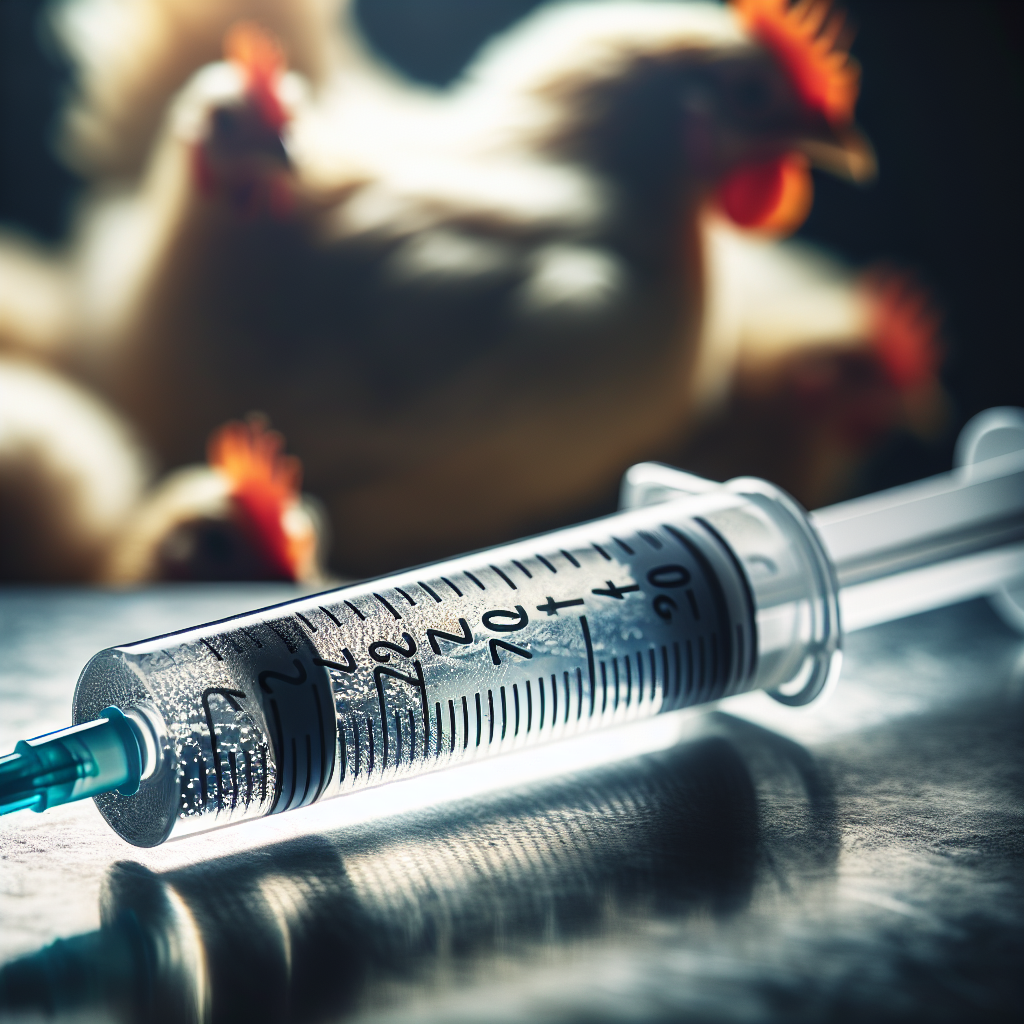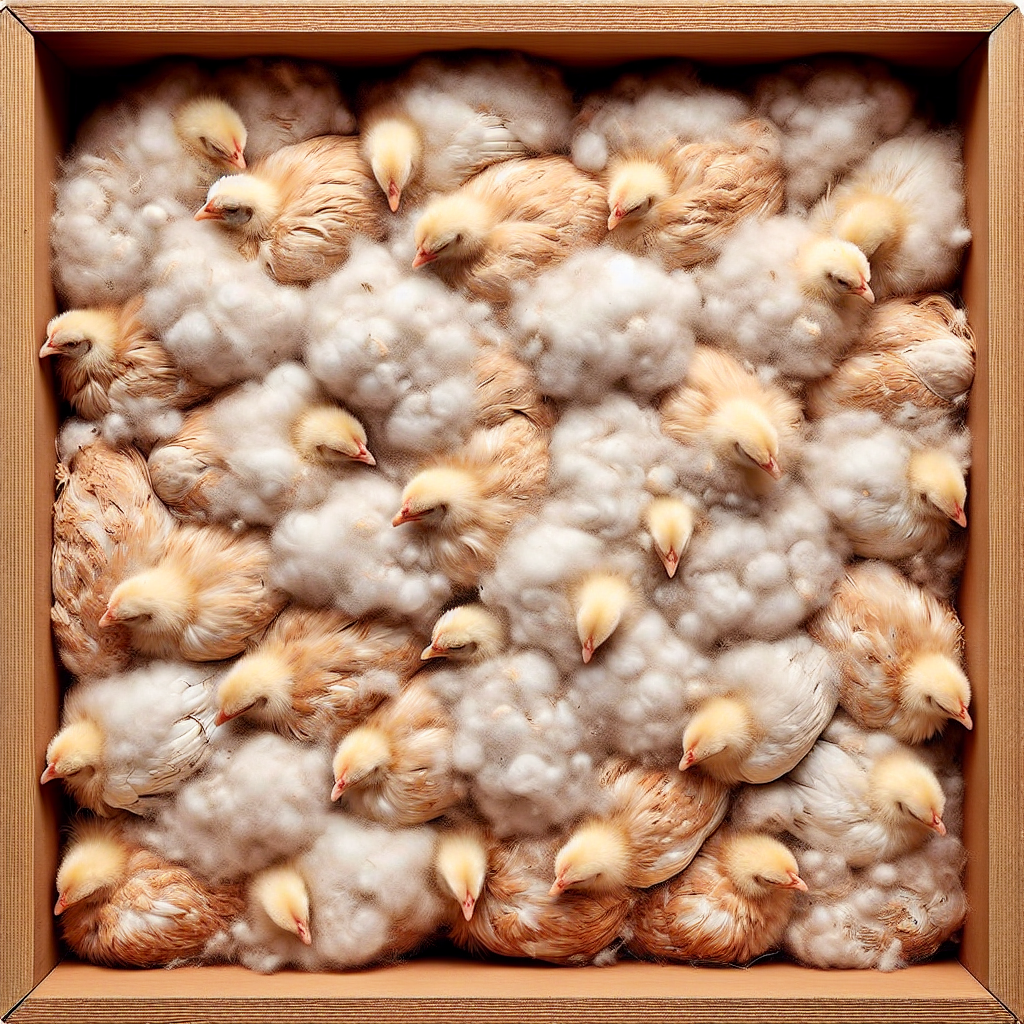Are you a chicken lover and owner, curious about how to keep your feathered friends healthy and happy? Well, fret no more! In this article, you will discover effective methods to prevent and treat mites and lice infestations in chickens. These pesky critters can cause discomfort and health issues for your beloved fowls, but with our simple and friendly advice, you’ll be equipped to tackle these challenges head-on. So let’s dive in and learn how to protect your flock from these unwelcome guests!
Preventing Infestations
Understanding the Risks
To prevent infestations in your chickens, it is important to understand the risks associated with mites and lice. These external parasites can cause a range of health issues for your flock, including skin irritation, feather damage, anemia, and decreased egg production. They can also transmit diseases and weaken the overall immune system of your birds. By being aware of the risks, you can take proactive steps to prevent infestations from occurring.
Maintaining Cleanliness
One of the key steps in preventing mites and lice infestations in chickens is maintaining a clean environment. Regularly cleaning the coop, removing debris, and replacing soiled bedding will help minimize the favorable conditions for these pests to thrive. By eliminating the places where mites and lice can reproduce and hide, you can significantly reduce the risk of infestation.
Implementing Quarantine Measures
Introducing new birds to your flock without proper quarantine measures can be a recipe for disaster. Birds brought in from outside sources may carry mites or lice that can quickly spread to your existing flock. To prevent infestations, it is crucial to quarantine new birds for at least two weeks in a separate area, away from the main coop. During this time, closely monitor the new birds for any signs of infestation before allowing them to mingle with the rest of your flock.
Providing Adequate Space
Overcrowding can create stress and increase the likelihood of mites and lice infestations in your chickens. It is important to provide adequate space for your flock to roam and live comfortably. This will not only reduce stress levels but also make it easier for you to monitor and maintain the cleanliness of their living environment.
Inspecting New Birds before Introducing
Before introducing new birds to your existing flock, it is essential to conduct a thorough inspection. Look for any signs of mites or lice, such as itching, feather loss, or visible pests on their feathers or skin. If you notice any indications of infestation, it is best to treat the birds before introducing them to your flock. This proactive approach will help prevent the spread of pests to your existing chickens.
Reducing Stress Levels
Stress weakens the immune system of chickens, making them more susceptible to infestations. Minimizing stress is crucial in maintaining the health of your flock and preventing mite and lice infestations. Provide your birds with a stress-free environment by ensuring they have access to a balanced diet, clean water, suitable living conditions, and protection from predators. Minimizing sudden changes, disturbances, and overcrowding can also help reduce stress levels in your flock.
Identifying Infestations
Recognizing Symptoms
Being able to recognize the symptoms of mites and lice infestations in chickens is crucial for early intervention. Watch out for signs such as excessive scratching, restlessness, feather loss, red and irritated skin, and anemia. Additionally, mites may also leave visible bite marks or scabs on the birds’ skin. By identifying the symptoms early on, you can take prompt action to treat the infestation and prevent it from spreading.
Performing Regular Health Checks
Regular health checks are essential to catch any signs of infestations early. Set aside time to closely examine each bird, checking their skin, feathers, and overall appearance. This process will not only help you identify infestations but also allow you to spot any other potential health issues. Handle the birds gently and be observant for any cues that something might be amiss.
Using a Magnifying Glass
To get a closer look at the pests, using a magnifying glass can be incredibly helpful. Mites and lice are tiny creatures, making them difficult to spot with the naked eye alone. By using a magnifying glass, you can better identify these parasites and determine the appropriate treatment method.
Examining Feathers and Skin
During your health checks, be sure to thoroughly examine the feathers and skin of each chicken. Look for indications of mites or lice, such as small moving dots, clusters of white or gray eggs, or tiny black or red specks. Pay extra attention to areas where mites and lice tend to hide, such as under the wings, around the vent, or at the base of the feathers.
Checking for Mite Droppings
Checking for mite droppings is another effective way to identify infestations. Mite droppings often resemble small black specks and can be found on the feathers or bedding material. If you notice an increase in mite droppings, it is a clear indication of a mite infestation.
Treating Infestations
Isolating Infected Birds
Once you have identified an infestation in one or more of your chickens, it is crucial to isolate the infected birds immediately. This will prevent the spread of mites or lice to the rest of your flock and allow you to focus on treating the affected individuals. Create a separate space for the infected birds, ensuring they have suitable living conditions while undergoing treatment.
Applying Natural Remedies
Natural remedies can be effective in treating mite and lice infestations in chickens. For example, dust bathing areas with food-grade diatomaceous earth can help suffocate and kill the pests. Additionally, neem oil spray, which is derived from the neem tree, possesses natural insecticidal properties and can be applied to the birds’ feathers and skin to eliminate mites and lice.
Using Commercially Available Treatments
There are various commercially available treatments specifically designed to treat mite and lice infestations in chickens. These treatments often come in the form of sprays, powders, or dusts that can be applied directly to the birds or their living environment. Follow the instructions provided by the manufacturer carefully to ensure effective treatment.
Cleaning and Disinfecting the Coop
Treating infestations in chickens involves not only treating the birds themselves but also the environment in which they live. Thoroughly clean and disinfect the coop, removing all bedding material and debris. Disinfect with products specifically formulated for poultry housing, paying close attention to all cracks and crevices where mites and lice may hide. This step is crucial in preventing reinfestation.
Treating the Environment as Well
Infestations can persist if the environment in which your chickens live is not treated alongside the birds themselves. Treat the nesting boxes, perches, and any other areas where mites or lice may hide or reproduce. This will help eliminate any remaining pests and prevent their reinfestation.
Consulting a Veterinarian
In severe cases or if you are unsure about the best course of action, it is always advisable to consult a veterinarian who specializes in poultry. They can provide professional guidance and recommend appropriate treatments based on the specific situation. Veterinarians can also offer advice on preventive measures to minimize the risk of future infestations.
Natural Prevention and Treatment Methods
Dust Bathing Areas
Dust bathing is a natural behavior for chickens and also serves as a means of self-grooming. By providing specific areas for dust bathing, you encourage your flock to engage in this behavior, which can help prevent mite and lice infestations. Create dedicated dust bathing areas by using fine dirt or sand and ensuring it is easily accessible to your chickens.
Neem Oil Spray
Derived from the neem tree, neem oil possesses natural insecticidal properties and can be used as a preventative measure or a treatment for mite and lice infestations. Dilute neem oil according to the instructions provided and spray it directly onto the feathers and skin of your chickens. This will help repel pests and discourage infestations.
Diatomaceous Earth
Food-grade diatomaceous earth is a fine powder made from fossilized remains of aquatic organisms. It works by dehydrating and ultimately killing mites and lice upon contact. Spread diatomaceous earth in the coop, nesting boxes, and dust bathing areas to create a barrier against pests. Ensure that your chickens have access to clean drinking water as ingesting diatomaceous earth can be harmful.
Herbs and Essential Oils
Certain herbs and essential oils possess natural insect-repelling properties and can be used as preventive measures. Herbs such as lavender, mint, and thyme can be planted near the coop or used in the bedding material. Essential oils, such as lavender or tea tree oil, can be diluted and applied to the chickens’ feathers to repel mites and lice. However, caution must be exercised as essential oils can be toxic to chickens when used in excess.
Precautions and Safety Measures
Wearing Protective Gear
When handling pesticides or chemicals, it is crucial to wear protective gear to minimize the risk of exposure. This can include gloves, a mask, and goggles to protect your skin, respiratory system, and eyes. Take safety precautions seriously to ensure your well-being while treating infestations in your chickens.
Avoiding Chemical Overuse
While chemical treatments can be effective in eliminating mites and lice, it is important to avoid excessive use. Overuse of chemical pesticides can lead to the development of resistance in pests and harm the overall health of your flock. Use treatments as directed and consider natural alternatives as part of your prevention and treatment plan.
Following Product Instructions
When using commercially available treatments or natural remedies, always follow the product instructions provided. Proper application and dosage are essential for effective treatment and prevention. Deviating from the instructions may lead to ineffective treatment or potential harm to your chickens.
Monitoring for Allergic Reactions
During the treatment process, it is crucial to monitor your chickens for any allergic reactions or adverse effects. Some birds may have sensitivities to certain treatments or ingredients. If you notice any signs of discomfort, such as excessive itching, increased respiratory distress, or behavior changes, discontinue the treatment and consult a veterinarian immediately.
Shared Spaces and Contamination
Separating Infected Birds
When dealing with infestations, it is important to separate infected birds from the rest of the flock. This prevents the spread of mites or lice to healthy chickens. Maintain separate living spaces for infected birds until they have successfully completed treatment and are deemed pest-free.
Cleaning Feeders and Waterers Regularly
Shared spaces like feeders and waterers can become sources of contamination and serve as breeding grounds for mites and lice. Regularly clean and disinfect these areas to prevent infestations. Remove any feed or water residue that may attract pests, ensuring your chickens have access to uncontaminated food and water.
Regularly Changing Bedding
Dirty and soiled bedding can harbor mites, lice, and their eggs. Regularly change the bedding and dispose of it properly to prevent contamination and infestations. Use clean and dry bedding materials that are less conducive to pests establishing a presence in your coop.
Cleaning and Inspecting Nesting Boxes
Nesting boxes are another potential area where mites and lice may hide and reproduce. Clean and inspect nesting boxes regularly, ensuring there are no signs of infestation. Remove any signs of activity, such as eggs or pests, and treat the nesting boxes if necessary. Providing clean and pest-free nesting areas will help ensure the overall health and well-being of your chickens.
Prevention and Treatment for Lice Infestation
Understanding Lice Lifecycle
To effectively prevent and treat lice infestations in chickens, it is important to understand the lifecycle of these parasites. Lice spend their entire life cycle on the birds, feeding on their feathers and skin. There are two main types of lice that affect poultry: biting lice and sucking lice. Biting lice feed on the birds’ feathers, while sucking lice feed on their blood. By understanding their lifecycle, you can better target lice during treatment.
Using a Fine-Toothed Comb
One of the most effective methods of removing lice from chickens is by using a fine-toothed comb. Gently comb through the feathers of each bird, paying close attention to areas where lice may congregate, such as along the base of the feathers. Dip the comb in a soapy water solution after each stroke to help drown and kill the lice.
Applying Commercial Lice Treatments
Commercial lice treatments specifically formulated for poultry can be effective in treating lice infestations. These treatments often come in the form of sprays or powders that can be applied directly to the birds. Follow the instructions provided by the manufacturer carefully to ensure thorough treatment and prevent the lice from developing resistance.
Prevention and Treatment for Mite Infestation
Understanding Mite Lifecycle
To effectively prevent and treat mite infestations in chickens, it is important to understand the lifecycle of these pests. Mites are microscopic creatures that live in the coop, feed on chicken blood, and can survive for extended periods without a host. Their lifecycle consists of egg, nymph, and adult stages. By understanding their lifecycle, you can target mites at different stages for effective treatment.
Coating Legs with Petroleum Jelly or Vegetable Oil
An effective method to combat mite infestations is to coat the legs of your chickens with petroleum jelly or vegetable oil. Mites often congregate on the legs of chickens, and applying a thick layer of jelly or oil creates a physical barrier that suffocates the pests. Ensure that the coating is thick enough to cover all leg surfaces.
Applying Commercial Mite Treatments
Commercial mite treatments specifically formulated for poultry can be effective in treating mite infestations in chickens. These treatments often come in the form of sprays or powders that can be applied directly to the birds or their living environment. Follow the instructions provided by the manufacturer carefully to ensure effective treatment and prevent mite resistance.
Cleaning and Disinfecting the Coop Thoroughly
To effectively treat mite infestations, it is essential to thoroughly clean and disinfect the coop. Remove all bedding material, debris, and dust. Disinfect all surfaces, paying close attention to cracks and crevices where mites may hide. Allow the coop to dry completely before reintroducing your chickens. This step is crucial in preventing reinfestation and ensuring the health and well-being of your flock.
Managing Reinfestation and Continuous Prevention
Regular Coop Cleaning and Inspections
To manage the risk of reinfestation, it is crucial to maintain a regular cleaning and inspection routine for your coop. Clean the coop thoroughly on a regular basis, removing debris, changing bedding, and disinfecting surfaces as necessary. Regular inspections allow you to catch any signs of infestation early and take immediate action.
Implementing Preventive Measures After Treatment
After successfully treating an infestation, it is important to implement preventive measures to minimize the risk of future infestations. This includes maintaining cleanliness in the coop, regularly monitoring the health of your chickens, and practicing proper biosecurity measures. By staying vigilant and proactive, you can reduce the chances of reinfestation.
Quarantining New Birds before Integration
Introducing new birds to your flock without proper quarantine measures can pose a risk of introducing mites or lice. To prevent reinfestation, it is important to quarantine new birds for at least two weeks in a separate area, away from the main coop. During this time, observe and monitor the new birds for any signs of infestation before integrating them with the rest of your flock.
Choosing the Right Products
Consulting with Veterinarians or Poultry Experts
When it comes to selecting products for prevention and treatment, seeking guidance from veterinarians or poultry experts can be invaluable. They can provide insight into the most effective products based on your specific situation and help identify any potential risks or contraindications. Consulting professionals will ensure you make informed decisions regarding the products you use.
Researching and Reading Product Reviews
Before purchasing any prevention or treatment products, take the time to conduct thorough research and read product reviews. Gather information on the effectiveness, safety, and user experiences with different products. Consider factors such as ingredients, application methods, and compatibility with your specific flock. This research will help you make well-informed choices and select the most appropriate products for your needs.
In conclusion, preventing and treating mites and lice infestations in chickens requires a combination of proactive measures, regular inspections, appropriate treatment methods, and ongoing preventive practices. By understanding the risks, maintaining cleanliness, implementing quarantine measures, providing adequate space, inspecting new birds, reducing stress levels, and following proper treatment protocols, you can effectively prevent infestations and ensure the health and well-being of your flock. Remember to consider natural prevention and treatment methods, adhere to precautions and safety measures, address shared spaces and contamination, and employ preventive and treatment strategies specific to lice and mite infestation. With careful attention and a proactive approach, you can successfully manage infestations, reduce the risk of reinfestation, and maintain a thriving and healthy chicken flock.




